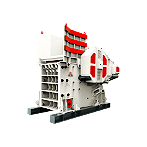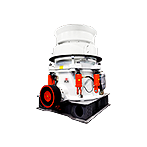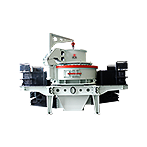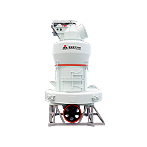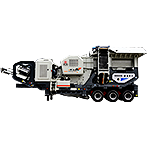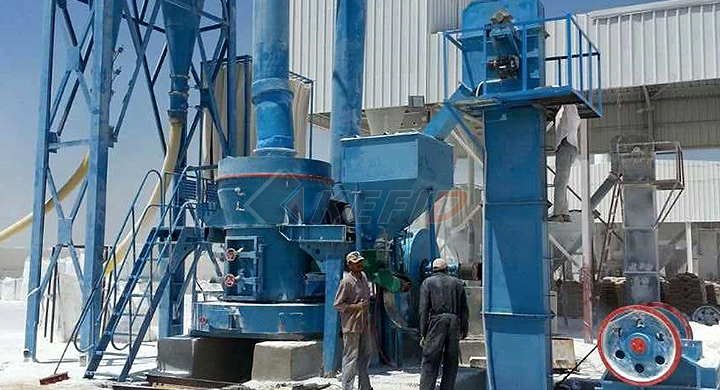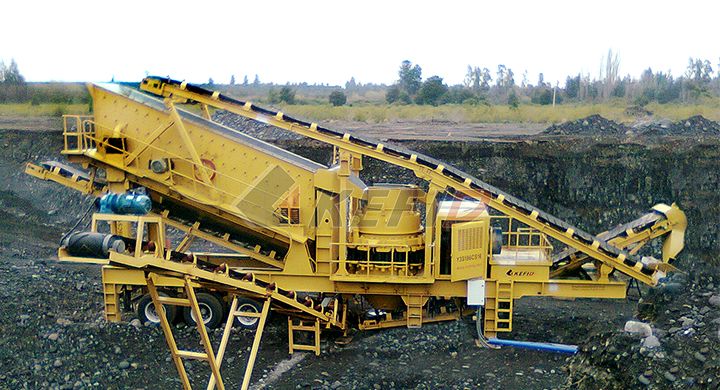магазин
gravel classification procedure
KEFID,Дробильно-сортировочное оборудование Китая высокого качества, стандартное дробильное оборудование. На протяжении более 30 лет мы занимаемся исследованиями и разработками и производством дробильного оборудования, дробления зданий, промышленных дробилок и экологически чистых строительных материалов, и предлагаем профессиональные решения и дополнительные продукты для создания ценность для клиентов.
Онлайн сообщение
gravel classification procedure

Unified Soil Classification System Wikipedia
The Unified Soil Classification System (USCS) is a soil classification system used in engineering and geology to describe the texture and grain size of a soilThe classification system can be applied to most unconsolidated materials, and is represented by a twoletter symbol Each letter is described below (with the exception of Pt):gravel classification procedure Understanding the Geotechnical Report as an This will usually identify the soil by classification of particle sizing such as cobble gravel sand silt or clay etc Most soils are a combination of these classifications meaning there is a gradation of material Sand and larger grains are often referred asgravel classification procedure V W Automation SA

ENGINEERING CLASSIFICATION AND DESCRIPTION OF SOIL
Gravel—particles of rock that will pass a 3in (75mm) sieve and is retained on a No 4 (475mm) sieve Gravel Classification procedures are not applied to peat Classifications of Soils Group Names and Group Symbols The identification and naming of a soil based on resultsThis procedure is carried out to classify soils according to the Unified Soil Classification System (USCS) Procedures For proper classification according to this system, some or all of the following information must be known: Percent of gravel—that is, the fraction passing the 762mm sieve and retained on the No 4 sieve (475mm opening)Classification of Soils According to the Unified Soil

gravel classification procedure ScalepaintDiorama`s
5 Aggregate Specifiions and Requirements INgov as noted on the Classifiion of Aggregates table Class AP is the highest 103, Procedure A 2) The sodium sulfate test in accordance with AASHTO T 104; 3) Gravel Coarse Aggregates There is a specific requirement for gravel coarse aggregates regardingChapter 4 Soil and Rock Classification and Logging Manual Procedure)”, provides a conventional system for classifying soils However, it alone does not provide adequate soft or decomposed rock that is friable (easily crumbled), and can be reduced to gravel size or smaller by normal hand pressure, should be classified as a soilChapter 4 Soil and Rock Classification and Logging

Classification by Distribution of Grain Sizes
Procedure for Classifying Soils by Grain Size Using USCS CE 340, Fall 2015 Soil Classification 5 / 7 Example #1, Soil Classification Using Results of Sieve Analysis clayey sand with gravel Soil Classification: clayey sand with gravelas being a gravel or a sand by estimating whether 50% or more, by weight, of the coarse grains are larger or smaller than 475 mm (No 4 sieve size) 2 If the soil is a gravel, identify as being "clean" (containing little or no fines, <5%) or "dirty" (containing an appreciable amount of fines, >12%) For clean gravels final classification isUnified Soil Classification System

Chapter 3 Engineering Classification of Earth Materials
cobbles, gravel, sand, silt, and clay Numerous grade scales have been developed to establish the limits of size for each of these classifications Table 3–1 shows some of the commonly used grade scales for comparison Note that the range in size for a particular class of particle may differ from one classification system to anotherJul 01, 2015· OnSite Identification & Classification of Soil The principle terms used by civil engineers to describe soils are Gravel (particle size larger than 475 mm) Sand (particle size within 475 mm to 0075mm) Silt & Clay (particle size less than 0075mm) Most natural soils consist of a mixture of two or more of these constituents and []HOW TO IDENTIFY & CLASSIFY SOIL ON SITE? [STEPBYSTEP

Classification of Soils According to the Unified Soil
This procedure is carried out to classify soils according to the Unified Soil Classification System (USCS) Procedures For proper classification according to this system, some or all of the following information must be known: Percent of gravel—that is, the fraction passing the 762mm sieve and retained on the No 4 sieve (475mm opening)Process flow diagram for construction sand and gravel processing (Source Classification Codes in parentheses) 11/95 Sand And Gravel Processing 111913 hydroseparators Material may also be rodmilled to produce smaller sized fractions, although this practice is not common in the industry After processing, the sand is transported to storage11191 Sand And Gravel Processing

how to classify crushed gravel
A Procedure for Classifying Textural Facies in GravelBed Rivers A procedure for classifying textural facies in gravelbed rivers John M Buffington1 and David R Montgomery except for byproducts such as manufactured sand, created from the gravel crushing or classification process Read More NJDOT 2007 Specifications Division 900LABORATORY CLASSIFICATION OF SOILS FOR ENGINEERING PURPOSES TXDOT DESIGNATION: TEX142E CONSTRUCTION DIVISION 2 – 7 LAST REVIEWED: SEPTEMBER 2014 25 Organic Clay—Organic clay is a soil that would be classified as a clay except that its LL after oven drying (dry sample preparation) is less then 75% of its LL before oven drying (wet sample preparation)LABORATORY CLASSIFICATION OF SOILS FOR ENGINEERING

Classification of Aggregates Based on Size and Shape
Classification of Aggregates Based on Size Aggregates are available in nature in different sizes The size of aggregate used may be related to the mix proportions, type of work etc the size distribution of aggregates is called grading of aggregates Following are the classification ofIn particular, current classification systems fail to capture the dominant role of fines on the mechanical and hydraulic properties of soils A revised soil classification system (RSCS) for coarsefine mixtures is proposed herein Definitions of classification boundaries use low and high void ratios that gravel, sand, and fines may attainRevised Soil Classification System for CoarseFine

A Detailed Guide on Classification of Soil
Classification procedure; With required test data available proceed from left to right on the chart (in the above picture), and the correct group will be found by the process of elimination The first group from the left into which the test data will fit is the correct classificationTable 66 Burmister Soil Classification System FineGrained Soils, Plasticity of Components Table 67 Burmister Soil Classification System, Components and Fractions, Modified from Burmister, 1950 6234 US Comprehensive Soil Classification System Table 68 Textural Descriptions for USDA System 6235 Comparison of the Soil ClassificationChapter 6 Sample Collection New Jersey

Appendix B The Unified Soil Classification System
Unified Soil Classification System B1 Appendix B seldom exist in nature separately as sand, gravel, or any other single component They are usually found as mixtures with varying proportions of and to discuss the methods of identification so that a uniform classification procedure may be followed by all who use the system Placement ofEveryone involved in gravel road maintenance must understand the correct shape of the entire area within the road’s rightofway Figure 1 shows a typical cross section of a gravel road If states have minimum standards or policies for lowvolume roads, they must be followed In order to maintain a gravelGravel Roads: Maintenance and Design Manual Section I

Engineering Field Manual
@ me unified soil classification system 48 Classification Using Laboratory Data 413 Minimum sand or gravel section 433 414 Unified investigation and presents a procedure for the preliminary embankment design of earth dams Bask Conceptssoil testing procedures as compared to the Second Edition (1974) This report documents the changes in the soil classification procedures, as follows: USBR 5000 Determining Unified Soil Classification (Laboratory Method) USBR 5005 Determining Unified Soil Classification (Visual Method) 17 KEY WORDS AND DOCUMENT ANALYSIS a DESCRIPTORSUNIFIED SOIL CLASSIFICATION SYSTEM PROCEDURES

Gravel PIt Study Municipal District of Peace No 135
Mar 08, 2011· Gravel is an important resource in the development of infrastructure and construction It is also a nonrenewable resource and its excavation and need to be utilization sustainable Gravel aggregates are typically located in river valleys, streams and in glacial deposits In the Municipal District of PeaceNo 135, the majority of gravelClassification of Aggregates According to Nature of Formation Shape wise Classification of Aggregates In nature, aggregates are available in different sizes The size of aggregate used may be related to the concrete mix proportions, type of the work etc The size of aggregate is mainly divided into two categories: 01 Fine Aggregate 02Classification of Aggregates Based on Size

11191 Sand And Gravel Processing
Process flow diagram for construction sand and gravel processing (Source Classification Codes in parentheses) 11/95 Sand And Gravel Processing 111913 hydroseparators Material may also be rodmilled to produce smaller sized fractions, although this practice is not common in the industry After processing, the sand is transported to storageIn particular, current classification systems fail to capture the dominant role of fines on the mechanical and hydraulic properties of soils A revised soil classification system (RSCS) for coarsefine mixtures is proposed herein Definitions of classification boundaries use low and high void ratios that gravel, sand, and fines may attainRevised Soil Classification System for CoarseFine

Engineering Field Manual
@ me unified soil classification system 48 Classification Using Laboratory Data 413 Minimum sand or gravel section 433 414 Unified investigation and presents a procedure for the preliminary embankment design of earth dams Bask Conceptssoil testing procedures as compared to the Second Edition (1974) This report documents the changes in the soil classification procedures, as follows: USBR 5000 Determining Unified Soil Classification (Laboratory Method) USBR 5005 Determining Unified Soil Classification (Visual Method) 17 KEY WORDS AND DOCUMENT ANALYSIS a DESCRIPTORSUNIFIED SOIL CLASSIFICATION SYSTEM PROCEDURES

Gravel PIt Study Municipal District of Peace No 135
Mar 08, 2011· Gravel is an important resource in the development of infrastructure and construction It is also a nonrenewable resource and its excavation and need to be utilization sustainable Gravel aggregates are typically located in river valleys, streams and in glacial deposits In the Municipal District of PeaceNo 135, the majority of gravelSoil classificationis the separation of soil into classes or groups each having similar characteristics and potentially similar behaviour A classification for engineering purposes should be based mainly on mechanical properties, eg permeability, stiffness, strength The class to which a soil belongs can be used in its descriptionSoil classification

Classification of Aggregates Based on Size
Classification of Aggregates According to Nature of Formation Shape wise Classification of Aggregates In nature, aggregates are available in different sizes The size of aggregate used may be related to the concrete mix proportions, type of the work etc The size of aggregate is mainly divided into two categories: 01 Fine Aggregate 02Mar 27, 2019· The procedures and tables in this article can be used out in the field to estimate the classification of a soil sample This guide is intended for use in construction materials testing, but it can be useful for anyone who works with soil and wants to understand its properties betterVisualManual Soil Classification and Description | Owlcation

Appendix B The Unified Soil Classification System
Unified Soil Classification System B1 Appendix B seldom exist in nature separately as sand, gravel, or any other single component They are usually found as mixtures with varying proportions of and to discuss the methods of identification so that a uniform classification procedure may be followed by all who use the system Placement ofThe Minnesota Department of Transportation provides its home page with links to its regional offices, bid letting, construction, future highway plans, hot topics, jobs, library, licensing information, map sales, news, public meetings, research, road & travel information, and related linksGrading and Base Home Page

Sieve Analysis, Particle Sizing, Sieve Mesh, AASHTO Soil
Classification of soil Soil Mechanics Books There are two soil classification systems in common use for engineering purposes The Unified Soil Classification System is used for virtually all geotechnical engineering work except highway and road construction, where the AASHTO soil classification system is used Both systems use the results of grain size analysis and determinations of Atterberg28, and the Unified Classification for the crusher run aggregate ranges between a GWGM and a SWSM This material is referred to as gravel or crusher run gravel in this report 532 Standard Density Relationships New Castle sand Moisturedensity relationships were determined for the New Castle sand using the modified Proctor procedure (ASTMSOIL PARAMETERS

SOIL CLASSIFICATION ResearchGate
Soil (4) classified as sandy gravel 34 Textural Classification The textural classification systems developed by the US Department of Agriculture (USDA) This classification method is based onSoil Classification Figure 71 from FHWA NHI01031 Medium Gravel Fine Gravel MediumCoarse Dry Clay Silt Sand (kaolin) 3/8 in #40 #10 #200 MECHANICAL SIEVE ANALYSIS (ASTM D442, D1140 AND AASHTO T88)14330 Soil Classification DPHU
